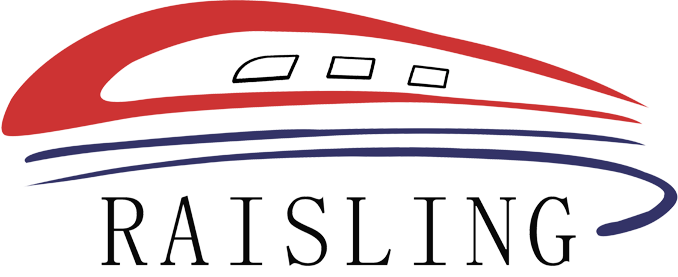Understanding the Importance of Rail Clips in Modern Rail Transport
Jun 17,2025
Understanding the Importance of Rail Clips in Modern Rail Transport Table of Contents 1. Introduction to Rail Clips 2. The Role of Rail Clips in Rail Infrastructure 3. Types of Rail Clips: A Comprehensive Overview 3.1 Elastic Rail Clips 3.2 Fixed Rail Clips 3.3 Special Purpose Rail Clips 4. Key Benefits of Using Rail Clips 5. Innovations in Rail Clip Technology 6. Installation and Maintenance of R

Understanding the Importance of Rail Clips in Modern Rail Transport
Table of Contents
1. Introduction to Rail Clips
2. The Role of Rail Clips in Rail Infrastructure
3. Types of Rail Clips: A Comprehensive Overview
3.1 Elastic Rail Clips
3.2 Fixed Rail Clips
3.3 Special Purpose Rail Clips
4. Key Benefits of Using Rail Clips
5. Innovations in Rail Clip Technology
6. Installation and Maintenance of Rail Clips
7. Common Challenges Faced with Rail Clips
8. Future Trends in Rail Clip Development
9. Frequently Asked Questions (FAQs)
10. Conclusion
1. Introduction to Rail Clips
In the ever-evolving world of modern rail transport, the significance of rail clips cannot be overstated. These seemingly small components play a crucial role in ensuring the stability, safety, and efficiency of railways. As the backbone of rail infrastructure, rail clips help secure the rails to the sleepers, maintaining the essential alignment and integrity of the railway track. This article delves deep into the importance of rail clips, exploring their various types, benefits, and the future advancements in this vital component of rail transport.
2. The Role of Rail Clips in Rail Infrastructure
Rail clips serve as the primary mechanism for fixing railway tracks to their base. By anchoring the rails to the sleepers, they prevent lateral and vertical movements that could lead to derailments or other accidents. The effectiveness of rail clips enhances the overall safety of rail transport, making them indispensable in the railway industry.
Moreover, rail clips are critical for maintaining the proper gauge of the tracks. An accurate gauge is vital for the smooth running of trains, ensuring that they travel safely and efficiently. Without the anchorage provided by rail clips, tracks can shift and warp, leading to potential hazards.
3. Types of Rail Clips: A Comprehensive Overview
Understanding the different types of rail clips is essential for appreciating their functions and applications in modern rail transport.
3.1 Elastic Rail Clips
Elastic rail clips are designed with a flexible material that allows them to adapt to the movement of the tracks. This flexibility is crucial for accommodating thermal expansion during temperature fluctuations, ensuring that the tracks remain intact and safe.
3.2 Fixed Rail Clips
Fixed rail clips are more rigid and are primarily used in environments where stability is paramount. They offer less flexibility but provide enhanced support for heavy rail loads, making them suitable for high-speed rail lines and areas with frequent heavy traffic.
3.3 Special Purpose Rail Clips
Special purpose rail clips are tailored for specific applications, particularly in areas requiring unique performance standards, such as seismic zones or regions with extreme weather conditions. These clips are engineered to withstand specific environmental challenges, ensuring safety and reliability.
4. Key Benefits of Using Rail Clips
The advantages of utilizing rail clips in modern railway systems are numerous, including:
1. **Safety**: Rail clips enhance the safety of rail systems by preventing track misalignment and derailments.
2. **Cost-Effectiveness**: By ensuring that tracks are properly secured and maintained, rail clips help reduce maintenance costs and extend the lifespan of the railway.
3. **Efficiency**: Well-secured tracks lead to smoother train operations, resulting in fewer delays and improved service reliability.
4. **Adaptability**: Different types of rail clips can be used in various environments, allowing for customized solutions based on specific requirements.
5. Innovations in Rail Clip Technology
As rail transport continues to advance, so does the technology behind rail clips. Innovations such as the development of composite materials and advanced manufacturing techniques have led to stronger, lighter, and more durable rail clips. These advancements not only improve performance but also contribute to sustainability goals by reducing the materials needed for production.
Additionally, smart rail clips equipped with sensors are being explored. These sensors can monitor the condition of the rail and the clip itself, providing real-time data on wear and tear. This information is invaluable for predictive maintenance, allowing operators to address issues before they escalate into serious problems.
6. Installation and Maintenance of Rail Clips
Proper installation and maintenance of rail clips are crucial for ensuring their effectiveness and longevity. The installation process involves aligning the rail clips accurately with the sleepers and securing them tightly to prevent any movement. Regular inspections and maintenance checks should be performed to assess the condition of the clips and replace any that show signs of wear.
In many modern railway systems, automated monitoring solutions are being integrated into maintenance practices. These technologies facilitate timely interventions, ensuring that rail clips remain in optimal condition.
7. Common Challenges Faced with Rail Clips
Despite their importance, rail clips face several challenges, including:
1. **Wear and Tear**: Constant exposure to environmental factors can lead to deterioration over time, necessitating regular maintenance.
2. **Improper Installation**: Incorrectly installed rail clips can result in track misalignment, leading to safety hazards.
3. **Material Fatigue**: As rail systems face increasing loads and speeds, the materials used in rail clips must withstand greater stress, prompting ongoing research and development.
8. Future Trends in Rail Clip Development
Looking forward, the future of rail clips appears promising. There is a growing focus on sustainability, with many manufacturers exploring eco-friendly materials that do not compromise performance. Additionally, advancements in artificial intelligence and machine learning could revolutionize how rail systems monitor and maintain rail clips.
Smart rail systems with integrated technology are expected to become the norm, enabling real-time data collection and analysis. This shift will lead to enhanced safety and efficiency, further solidifying the role of rail clips in modern rail transport.
9. Frequently Asked Questions (FAQs)
Q1: What are the main functions of rail clips?
A1: Rail clips primarily secure the rails to the sleepers, maintaining track alignment and ensuring safety during train operations.
Q2: How often should rail clips be inspected?
A2: Rail clips should be inspected regularly, with maintenance checks performed based on traffic levels, environmental conditions, and manufacturer recommendations.
Q3: What are the advantages of using elastic rail clips?
A3: Elastic rail clips offer flexibility, accommodating thermal expansion and allowing for better performance in varying temperature conditions.
Q4: Can rail clips be reused after removal?
A4: It depends on their condition. If they show signs of wear or damage, it is safer to replace them rather than reuse them.
Q5: What materials are commonly used in rail clip manufacturing?
A5: Rail clips are typically made from steel or composite materials, with innovations leading to the development of more durable and lightweight options.
10. Conclusion
In conclusion, rail clips are a fundamental component of modern rail transport, providing safety, stability, and efficiency. As innovations continue to emerge, the importance of rail clips will only grow, ensuring that rail systems remain reliable and effective in meeting the demands of contemporary transportation. Understanding the critical role of these small yet mighty elements helps us appreciate the larger engineering marvel that is modern rail infrastructure.
Previous:
Recommended
Asia Pacific Rail 2025 Concludes in Bangkok, Showcasing Rail Industry's Future
Bangkok, May 29 - The Asia Pacific Rail 2025, a leading event in the railway and rail transit industry, successfully concluded on May 29 in Bangkok, Thailand.
There is one sheet production line and two high-precision engraving machines, with an annual production capacity of 6 million railway special height adjustment pads.
Contact Us


